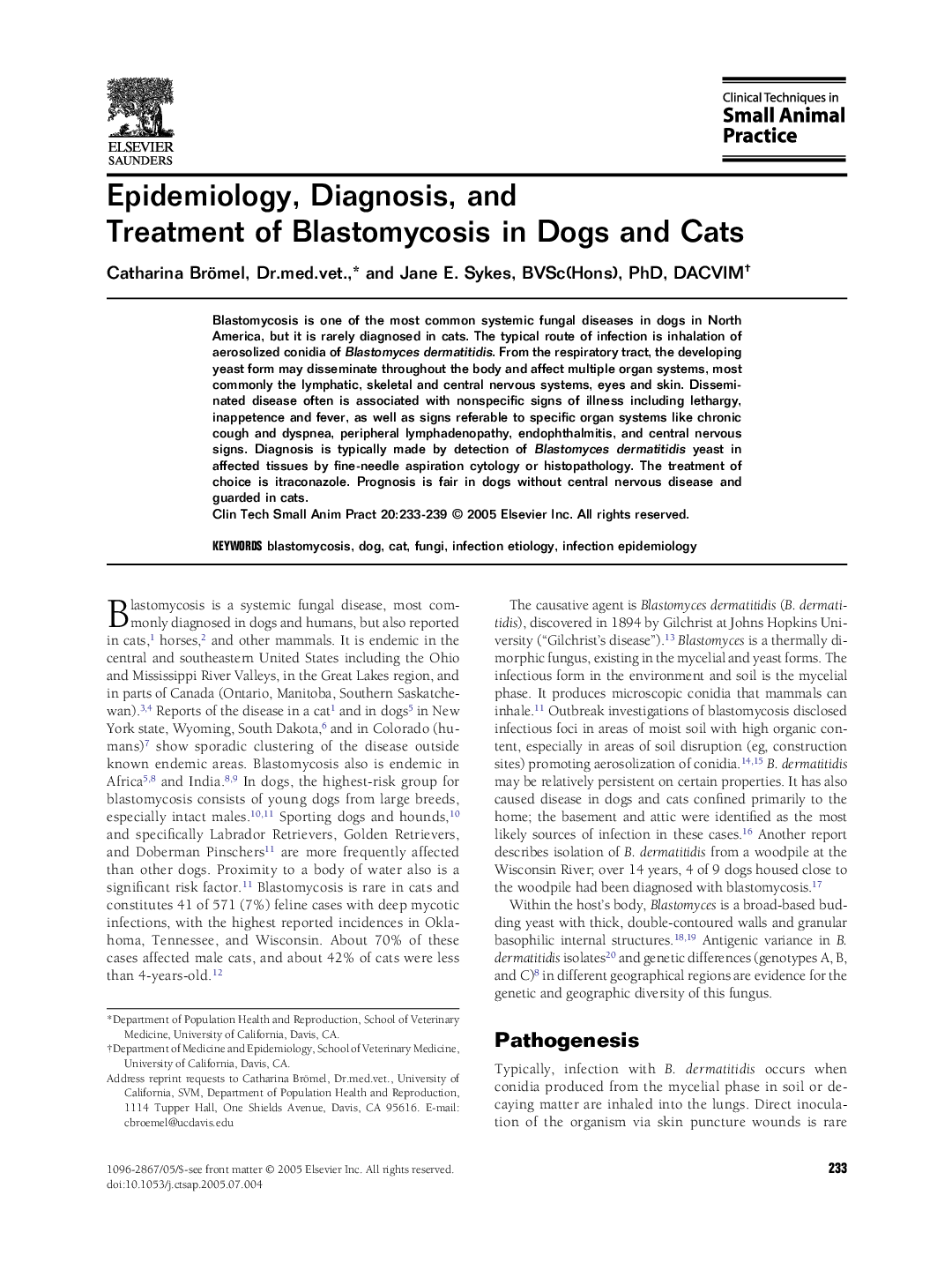| Article ID | Journal | Published Year | Pages | File Type |
|---|---|---|---|---|
| 8966882 | Clinical Techniques in Small Animal Practice | 2005 | 7 Pages |
Abstract
Blastomycosis is one of the most common systemic fungal diseases in dogs in North America, but it is rarely diagnosed in cats. The typical route of infection is inhalation of aerosolized conidia of Blastomyces dermatitidis. From the respiratory tract, the developing yeast form may disseminate throughout the body and affect multiple organ systems, most commonly the lymphatic, skeletal and central nervous systems, eyes and skin. Disseminated disease often is associated with nonspecific signs of illness including lethargy, inappetence and fever, as well as signs referable to specific organ systems like chronic cough and dyspnea, peripheral lymphadenopathy, endophthalmitis, and central nervous signs. Diagnosis is typically made by detection of Blastomyces dermatitidis yeast in affected tissues by fine-needle aspiration cytology or histopathology. The treatment of choice is itraconazole. Prognosis is fair in dogs without central nervous disease and guarded in cats.
Keywords
Related Topics
Health Sciences
Veterinary Science and Veterinary Medicine
Veterinary Medicine
Authors
Catharina Dr.med.vet., Jane E. BVSc(Hons), PhD, DACVIM,
